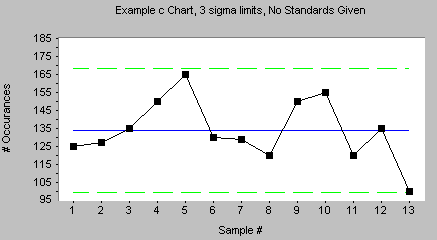
| Assignment1 Control Chart |
| Portfolio | Interest | Assignment1 | Assignment2 | Lab 4 | Feedback |
Control
Chart
History
Control charting is one of the tools of Statistical Quality Control (SQC). Dr.Walter developed it in the 1920s. A Shewhart of the Bell telephone labs. Control charts are used to routinely monitor quality. It is often used as an statistical approach to the study of manufacturing process variation for the purpose of improving the economic effectiveness of the process. Depending on the number of process variation and characteristics to be monitored, control charts can come in several types.
Background Information
A typical control chart is a graphical display of a quality characteristic that has been measured or computed from a sample versus the sample number of time. It is a run chart of individual values, which includes statistically generated upper and lower natural process limits, and signals of special undesirable cause variation. If the process is under control, sample points should fall in between the natural process limit. A center line in the middle between both upper and lower limit lines indicate the process average reading. Readings outside both limit lines indicate corrective actions should be taken to resume normal processing results and eliminate causes responsible. The process limits within which flows are expected to full in if the chart contains no special case of variation should full within the predicted range of ± 3 sigma from the centerline. However even through if values still fall within the limits, changes in behaviour systematically or suddenly might indicate process raging out of control.
Uses of Control Chart
Control charts can be used in total quality management to analysis, control and helps to reduce variation within a specific process such as in the manufacturing sector. It can track adverse changes over a period of time that can help management to make necessary adjustment quickly. Performance of the following company can be raised while avoiding and detecting problems in advance help save money while streamlining workflow. Disruptions and also unnecessary timely processing arrangements can also be prevented.
Software
Control charts can be quickly and easily created using numerous user-friendly graphical interface software that is available via the net. They can automatically process functions or calculations rapidly instead of what user normally must do manually. Variables and attributes can than be plotted with the software producing complete analysis of the stability, coupled with warning zone for signals.
WinCEP, CF Control Panel and subscripted software packages are available through the net to facilitate tabulation of chart. Ordinary Microsoft Excel, Lotus 123 can also be used.
How to construct Control Chart
Control Chart Example

Recommended links